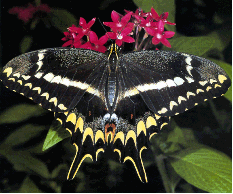MSRP Map
Linking the South Florida Multi-Species Recovery Plan to Local Government Planning and Regulation

In 1993 the Federal Government initiated the South Florida Ecosystem Restoration Initiative. The purpose of this Initiative is to restore and maintain the natural functions of freshwater, estuarine, and marine environments where human activities occur in a manner that supports healthy natural conditions.Three of the major objectives of the Restoration Initiative are to:
- Restore and maintain the biodiversity of native plants and animals in the upland, wetland, estuarine, and marine communities of the South Florida Ecosystem;
- Recover species that are threatened or endangered; and
- Ensure that any plans or permits for development are fully coordinated among affected governmental agencies and are compatible with the restoration of the South Florida Ecosystem.

To accomplish the first two objectives, the U.S. Fish and Wildlife Service (FWS) has completed the South Florida Multi-Species Recovery Plan (MSRP). The MSRP identifies the recovery and restoration needs of listed species in the South Florida Ecosystem. This innovative plan uses an ecosystem-wide approach to recovery and contains the information needs of the agencies involved in the South Florida Restoration Initiative. The MSRP also contains information that could be used by regional agencies and local governments in planning and regulatory decisions. This would help local governments to integrate their efforts with the South Florida Multi-Species Recovery Plan and ecosystem restoration. This information has been synthesized into the following interactive tool, designed to help regional agencies and local governments identify threatened/endangered species and habitats in their area.
The huge spatial extent of the historical Everglades landscape is gone and cannot be regained. In fact, we probably cannot substantially increase the extent of the remaining natural area. However, by gathering and transferring relevant informationto land use policy- and decision-makers we have the best chance of maintaining a sustainable South Florida where human activities support healthy natural ecosystems.

Key Deer (USFWS 1999)
Schaus Swallowtail Butterfly (USFWS 1999). Original photograph by Thomas Emmel.
Tiny Polygala (USFWS 1999). Original photograph by Deborah Duval.




